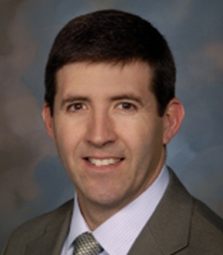What is Scoliosis?
Scoliosis is an abnormal, sideways curvature of the spine. It is often diagnosed between infancy and early adolescence.
Key facts
- Your child may be born with scoliosis or can develop it later in life
- Typically, the primary age of onset for scoliosis is 10-15 years old
- The curve can happen on one or both sides of the spine
- The curve is usually C-shaped, and can also be S-shaped
- The angle of the curve can be up to 45 degrees
- It is seen more commonly in girls
Spine Anatomy
Your child’s spine comprises three main parts: the neck (cervical spine), the chest and mid-back (thoracic spine), and the lower back (lumbar spine). The spine is made up of bones called vertebrae which are stacked one upon the other like blocks forming a vertical line in the back.
In scoliosis, the vertebrae curve to one side and rotate or twist, making your child appear to lean to one side.
Types of Scoliosis
- Idiopathic: Scoliosis caused by unknown factors
- Congenital: This tends to run in families. It occurs when the spine does not develop properly in the womb.
- Neuromuscular: Certain disorders of the brain, spinal cord, and muscular system can result in scoliosis (for example, cerebral palsy or muscular dystrophy)
Also injuries, infections or tumors (rare) of the spine can cause scoliosis.
Symptoms
Most cases of scoliosis are mild and do not affect your child’s appearance or health and does not cause any pain or interfere with their everyday activities.
However, in some children the condition may become worse as they grow leading to more severe scoliosis which can be painful and disabling. This may result in back pain, physical limitations and other health problems.
Other noticeable symptoms can be:
- Your child’s spine curving side to side
- Uneven hips, waist and shoulders
- A shift of the waist and trunk to the side
- Head not centered directly above the pelvis
- Muscle spasms, prominent ribs of the chest
- Trouble walking/standing up straight
- Fatigue, shortness of breath
- Numbness, weakness, or pain in the legs
Diagnosis
Early diagnosis is key for the treatment of scoliosis. The doctor will initially take a detailed growth and medical history of your child.
This is followed by a physical examination where the doctor may have your child stand and then bend over to assess their spinal column. The examination also involves looking at the curve of the spine from the sides, front, and back. A neurological exam may also be conducted to check for muscle weakness.
Additionally, imaging tests such as an X-ray, an MRI scan or a CT scan can be ordered to confirm the diagnosis and determine the severity of the spinal curvature.
Treatment
The decision to treat the scoliosis considers factors such as the following:
- The severity of the curve
- The curve pattern
- Location of the curve
- Progress of the curve
- Age of your child
Usually, no treatment is necessary if the scoliosis is very mild as it often improves with time. However, moderate to severe scoliosis may be treated by back bracing or surgery.
Observation
Children who have mild scoliosis (spinal curve of less than 20 degrees) may need regular check-ups to assess for changes in the curvature of their spine as they grow. The doctor may recommend X-rays to monitor the condition and to decide if further treatment is needed.
Back bracing
If your child is still growing and there is moderate scoliosis (a curve ranging between 20 to 40 degrees), the doctor will recommend a back brace to prevent further progression of the curve. Most braces fit under the clothes and are not visible. Children who wear braces can participate in most activities and daily functions.
Surgery
Severe scoliosis (curve of more than 45 degrees) typically progresses with time. In such cases where the condition worsens despite conservative treatments, the doctor might suggest surgery to halt the condition’s progress. The most common type of scoliosis surgery is spinal fusion. Scoliosis surgery repairs the abnormal curvature and safely straightens your child's spine.
If Scoliosis is Left Untreated
If left untreated, scoliosis can interfere with heart and lung function leading to more health complications.
Other Related Topics
-
-

Fracture Care, Scoliosis and Spine
-

Fracture Care, Scoliosis and Spine, Child and Adolescent Hip Disorders, Complex Foot Deformity
-

Fracture Care, Limb Lengthening and Deformity, Clubfoot, Scoliosis and Spine, Pediatric Sports
-

Scoliosis and Spine
-

Fracture Care, Clubfoot, Hip Disorders, Limb Lengthening and Deformity, Scoliosis and Spine







